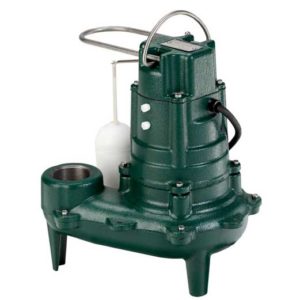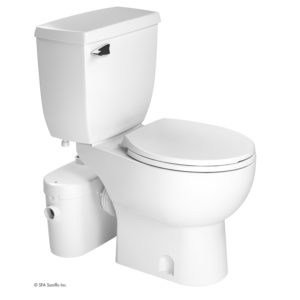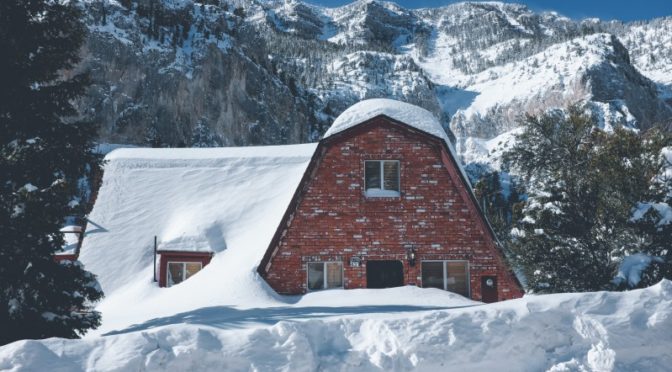
One of the most recurring themes of our guides to installing sump pumps, sewage pumps, and macerating toilets for basements and half bathrooms is the need to vent them. It’s important, but if you don’t know what it means to vent your plumbing, you won’t be in a position to identify problems when they occur. Today we’re going to look at what plumbing vents are, why they’re necessary, which common issues affect them (e.g., blockage and damage), and how to fix them (or get help!).
What are plumbing vents?
Plumbing vents, which are commonly also called vent stacks, are miniature chimneys designed to regulate air pressure inside your plumbing system. Think of them as drain pipes for your plumbing system; instead of clearing water and waste, plumbing air vents clear gases and odors. They also bring in fresh air so water can flow effectively through your drain pipes. However, they don’t carry water; they are vertical pipes connected to drain pipes and they vent out through your roof. The pipe that runs to the main vent in your roof is the vent stack; it runs exhaust gases out of your home and keeps a safe atmospheric pressure in your plumbing system.
Why are plumbing air vents important for your home?

A plumbing system is designed to pump out waste and water; for it to work well, it needs fully functioning drainage and vent systems.
Your drain pipes run waste from your home to either city sewer lines or to septic tanks; you’ll need sewage pumps to pump waste to these lines if you install fixtures below them, or if you use a septic tank. Vent pipes bring fresh air to your plumbing fixtures–your bathtub, your sink, your toilet, and so on–via drain pipes. This occurs whenever water moves through a fixture, such as when you flush a toilet or drain a sink. Sump pumps and sewage pumps will also require venting in most cases.
Besides bringing fresh air to your fixtures, plumbing vents also keep sewer gases out of your home while venting out waste gases and odors (i.e., toxic fumes). This is why plumbing vent pipes are placed on roofs and far away from windows and air conditioning units; you want the fumes away from wherever they might get drawn into your home and into your lungs.
Which problems affect plumbing vent pipes, and how do you troubleshoot them?

If your plumbing vent stacks and air vents aren’t working well, your drainage system will soon let you know. The symptoms may present themselves in a number of ways, such as through gurgling noises from your drains, standing water in your bathtubs and sinks, or particularly slow water draining in your kitchen or bathroom. In any of these cases, you might be dealing with a blocked plumbing vent.
When your vent stacks stop working due to blockage, you’re going to build up negative pressure in your drain pipes and water flow will stop or become severely restricted. Even if you’re able to clear a clogged drain on your own, you’re going to experience water flow interruptions again and again if they’re due to a blocked vent.
If your drains are flowing slowly due to blocked vents, sediment can start forming and accumulating in your drain pipes; this can lead to further wear, tear, and damage in your plumbing system, and you might eventually need to have your pipes repaired or replaced.
How do you fix plumbing venting issues without calling a plumber?
The simplest and cheapest ways to clear slow-flowing drains involve plungers, augers (plumbing snakes), and drain cleaners, in that order. A plunger attacks drain blockages by creating dramatic pressure changes (vacuums) in the pipes that can clear mild stops. Augers mechanically attack blockages and attempt to physically remove or reduce them. Drain cleaners chemically target sediment deposits with the same overall goal of clearing your pipes.
In many cases, these tools will help you deal with mild venting issues. However, once you’ve got a completely blocked vent stack, none of these options will work, as you’ll be dealing with a vacuum. When there’s a vacuum present, you’ll no longer have air or water flow, and there’ll be no gurgling audible. This is where things get serious.
What are symptoms of fully blocked vents and when do you need to call a plumber?
With completely blocked vents, you’ll start smelling sewer gases in rooms with affected fixtures. For example, if your bathroom sinks are stopped up, the smell will start there. If it’s from a blocked sump pump vent, you’ll start smelling it in your basement. These gases are toxic; you don’t want to expose yourself, your loved ones, or your pets to them. In many cases, you’ll be dealing with methane gas, which isn’t as toxic at low levels as a range of other gases, but you don’t want to risk the life of your children and family by betting that whatever you’re smelling isn’t that harmful to your health.
At this point, you’re going to need to call a plumbing professional; while it’s possible to fully troubleshoot and clear clogged plumbing air vents on your own, it might involve roof work and significant risk to life and limb. Considering how rare blocked vents are relative to everything else that can go wrong with a plumbing system, this isn’t an area you want to spend lots of time becoming an expert.
 If you find our work at PumpThatSump helpful, you can follow our relentless reviewing of every pump and fixture on the market by shopping via our links above for whatever you need to make your house a home. Despite being self-employed, we promise not to spend it all on health insurance.
If you find our work at PumpThatSump helpful, you can follow our relentless reviewing of every pump and fixture on the market by shopping via our links above for whatever you need to make your house a home. Despite being self-employed, we promise not to spend it all on health insurance.
